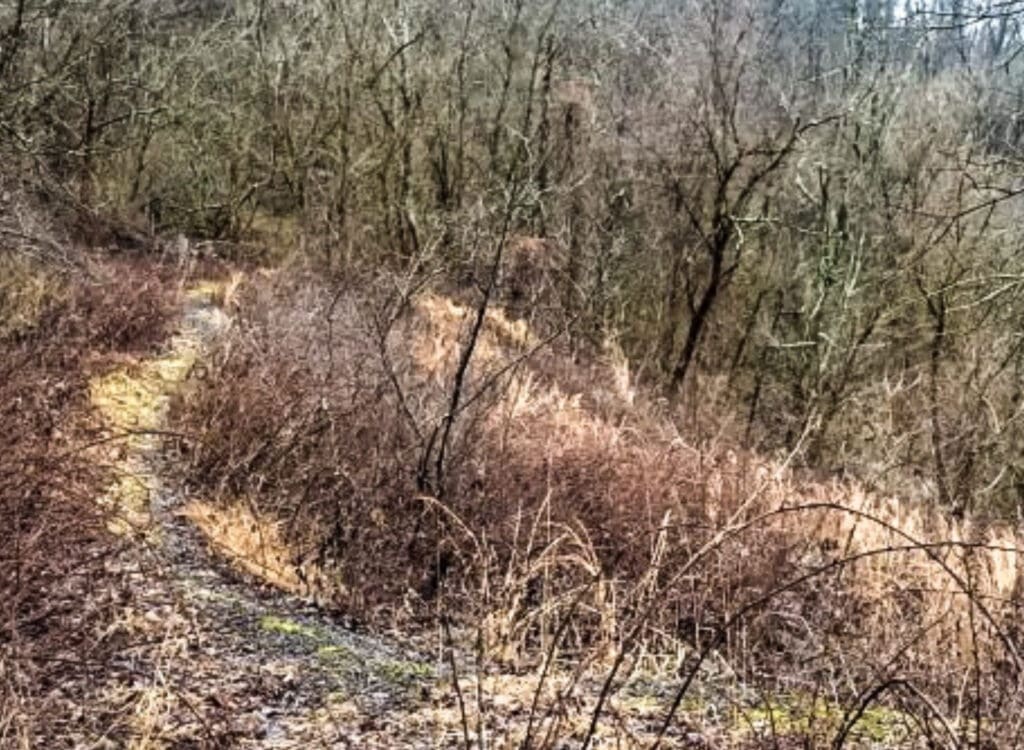
It’s a spotless span constructed in the early 1980s that passes over W.Va. Route 2/250 in Wheeling, and even though the large medical campus near it is slowly vanishing in favor of redevelopment, the legendary “Bridge to Nowhere” will remain in place.
Technically, according to Charlie Reynolds, the chief engineer for the Division of Highways District 6, the overpass is listed as “Bridge #3111” and it was built to connect Center Wheeling’s 22nd Street with the village of Bethlehem’s Chapel Hill Road. The one-mile street once ran the course of the hillside, but massive slips took place while the state highway bypass was built.
The damage did away with any passage possibilities so that’s why no one has ever driven a car or truck over the span. Only remnant sections of guardrail and patches of asphalt remain today, and there is proof ATVs and/or side-by-side vehicles have dared to cross it recently.
“We have no plans to do away with that bridge any time soon even though the OVMC campus is being cleared right now,” Reynolds explained. “It does get inspected just to make sure it’s OK, and there are no plans to use it in the future even with the new cancer center coming to that property. Anyone who hikes up or down that old road sees there’s not much left.
“I think the only people who use it now are the hikers, and there have been homeless camps up there, too,” the district engineer reported. “There is a barrier in front of the bridge on the Wheeling side so vehicles can pass and get up there because that’s a pretty dangerous area. But the bridge itself won’t go anywhere anytime soon.”

As for the future, though, Reynolds believes anything is possible.
“We hear a lot these days about new housing projects, and I know there’s a lot of building that’s taking place near Bethlehem, so another connection to Wheeling’s downtown might make sense some day down the road,” Reynolds said. “Who knows? If there wasn’t a massive slip along that hillside, I’m sure the bridge and road would be pretty popular these days with things the way they are now.
“Fixing that hillside would be a major, major project, and it wouldn’t be cheap,” he explained. “The only other thing I’ve ever heard about that ‘Bridge to Nowhere’ is that someone wanted to try to move it for use somewhere else, but that’s not how that works. Bridges are pretty much made to fit where they’re built so moving for another location wouldn’t be easy at all.”
Reynolds accepted the position as the chief administrator of the District 6 office in October, and not once has anyone locally or in Charleston ever mentioned Bridge #3111. Until recently, that is.
“It’s been in place since I was a kid, I know that, and I’m sure I asked about it once or twice back then, but I don’t think people pay much attention to it anymore. It just sits there and doesn’t cause any problems,” he said with a grin. “Even though it’s in great shape because it’s never been used, it’s still an older bridge made with older materials that we don’t use these days. So, who knows if it could even be used again?
“The bridge was needed back then because the highway was cut into the hillside in that area 50-or-so years ago, but now those folks in Bethlehem have Interstate 470 to use,” he added. “But I bet (Chapel Hill Road) was pretty popular back in the day just because of the convenience.”

